Themed collection Metal Complexes and Inorganic Materials for Solar Fuel Production

Metal complexes and inorganic materials for solar fuel production
Fausto Puntoriero and Osamu Ishitani introduce this Dalton Transactions themed collection on metal complexes and inorganic materials for solar fuel production.

Dalton Trans., 2020,49, 6529-6531
https://doi.org/10.1039/D0DT90081H
Recent advances in metalloporphyrin-based catalyst design towards carbon dioxide reduction: from bio-inspired second coordination sphere modifications to hierarchical architectures
The progress in CO2 reduction catalyst design was examined starting from simple metalloporphyrin structures and progressing to three-dimensional active architectures.

Dalton Trans., 2020,49, 2381-2396
https://doi.org/10.1039/C9DT04709C
Effect of metal ion substitution on the catalytic activity of a pentanuclear metal complex
A pentanuclear cobalt complex that consists of five cobalt ions and six bpp− ligands (Co5, Hbpp = 3,5-bis(2-pyridyl)pyrazole) was newly developed. The obtained complex can catalyze CO2 reduction under electrochemical and photochemical conditions.
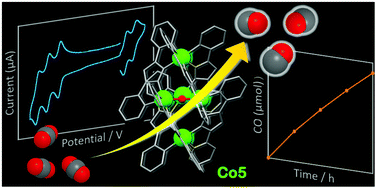
Dalton Trans., 2020,49, 1384-1387
https://doi.org/10.1039/C9DT04684D
Electrochemical and photoelectrochemical water splitting with a CoOx catalyst prepared by flame assisted deposition
A cobalt oxide catalyst prepared by a flame-assisted deposition method on the surface of FTO and hematite for electrochemical and photoelectrochemical water oxidation, respectively.
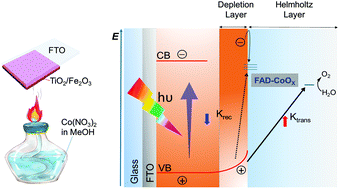
Dalton Trans., 2020,49, 588-592
https://doi.org/10.1039/C9DT03983J
Photocatalytic CO2 reduction using metal complexes in various ionic liquids
Photoreduction of CO2 catalysed by metal complexes successfully took place in various ionic liquids with relatively high durability.
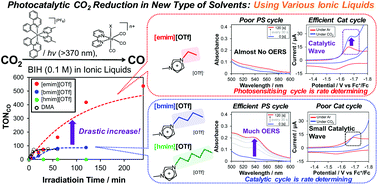
Dalton Trans., 2020,49, 4277-4292
https://doi.org/10.1039/C9DT04689E
Manifesto for the routine use of NMR for the liquid product analysis of aqueous CO2 reduction: from comprehensive chemical shift data to formaldehyde quantification in water
In the quest for developing CO2 reduction processes, we show the efficiency and applicability of 1H NMR as powerful technique for liquid phase products analysis.
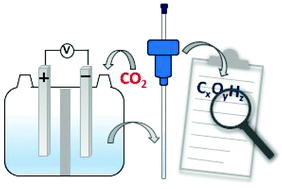
Dalton Trans., 2020,49, 4257-4265
https://doi.org/10.1039/C9DT04749B
Ru(II) water oxidation catalysts with 2,3-bis(2-pyridyl)pyrazine and tris(pyrazolyl)methane ligands: assembly of photo-active and catalytically active subunits in a dinuclear structure
A combined DFT and experimental study indicates that one water molecule is allowed to enter the first coordination sphere of a one-site catalyst, thus activating water oxidation.
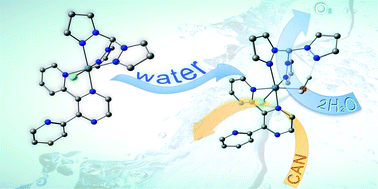
Dalton Trans., 2020,49, 3341-3352
https://doi.org/10.1039/C9DT04815D
Novel iridium complexes with N-heterocyclic dicarbene ligands in light-driven water oxidation catalysis: photon management, ligand effect and catalyst evolution
Iridium complexes with N-heterocyclic dicarbene ligands have been investigated in light driven water oxidation catalysis within the Ru(bpy)32+/S2O82− cycle.

Dalton Trans., 2020,49, 2696-2705
https://doi.org/10.1039/C9DT04841C
Ir- and Ru-doped layered double hydroxides as affordable heterogeneous catalysts for electrochemical water oxidation
Doping low-cost LDHs with noble metal atoms represents a promising approach to develop effective heterogeneous Water Oxidation Catalysts.
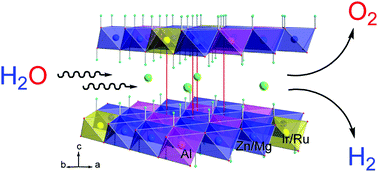
Dalton Trans., 2020,49, 2468-2476
https://doi.org/10.1039/C9DT04306C
Multi-potential-step chronocoulospectrometry for electrocatalytic water oxidation by a mononuclear ruthenium aquo complex immobilized on a mesoporous ITO electrode
A new Ru complex was synthesized to investigate electrocatalytic water oxidation on a mesoporous ITO electrode using multi-potential-step chronocoulospectrometry.
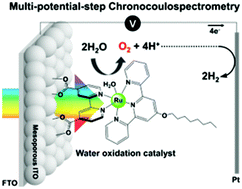
Dalton Trans., 2020,49, 1416-1423
https://doi.org/10.1039/C9DT04442F
Photoelectrochemical water-splitting over a surface modified p-type Cr2O3 photocathode
H2 generation via solar photoelectrochemical water-splitting by Cr2O3 was successfully realized by surface modification with TiO2 and the following Pt deposition.
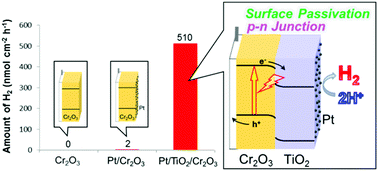
Dalton Trans., 2020,49, 659-666
https://doi.org/10.1039/C9DT04296B
About this collection
Welcome to the first Spotlight themed collection published by Dalton Transactions.
This is the first in a series of themed web collections on research topics that spotlight the fundamental and applied inorganic chemistry driving, influencing and steering each field of study. They will be guest edited by experts in the fields and will feature previously published and newly commissioned research in each topic. The aim is to provide a resource of high quality research for someone entering the field, for teachers to recommend to their students, to illuminate new directions for those in the field and demonstrate the vital role inorganic chemistry contributes to these fields.
This web collection guest edited by Prof. Fausto Puntoriero (Università degli Studi di Messina), and Prof. Osamu Ishitani (Tokyo Institute of Technology), highlights the fundamental and applied inorganic chemistry advances inspired by the study of solar radiation as a limitless source of clean energy. The collection contains contributions from experts in the study of solar light conversion, including research focussed on the development of metal complexes and inorganic materials for CO2 photoreduction, photocatalysis, and photoelectrochemical (PEC) water splitting.
Articles will be added to this themed collection as soon as possible after they are published. Please return to this page frequently to see the collection grow.
If you would like to contribute an article to this collection, please contact the Editorial Office at
dalton-rsc@rsc.orgwith your proposed topic.